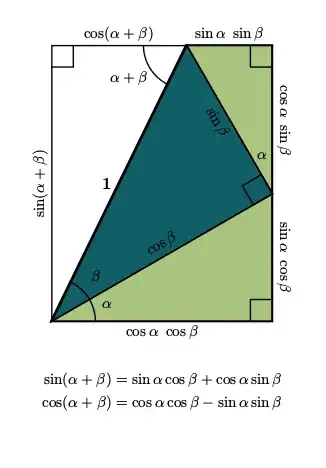We were taught a geometrical proof of the identity $\sin(\alpha+\beta)=\sin\alpha\cos\beta+\cos\alpha\sin\beta$ which consisted of drawing a triangle in a rectangle and looked like this:-

While I have no problem understanding this proof as long as the sum of the angles is an acute angle, I am not able to visualize how this proof works if the sum of the angles is not an acute angle.
How would this proof work if one angle is $120^\circ$ while the other is $285^\circ$ or $195^\circ$?
